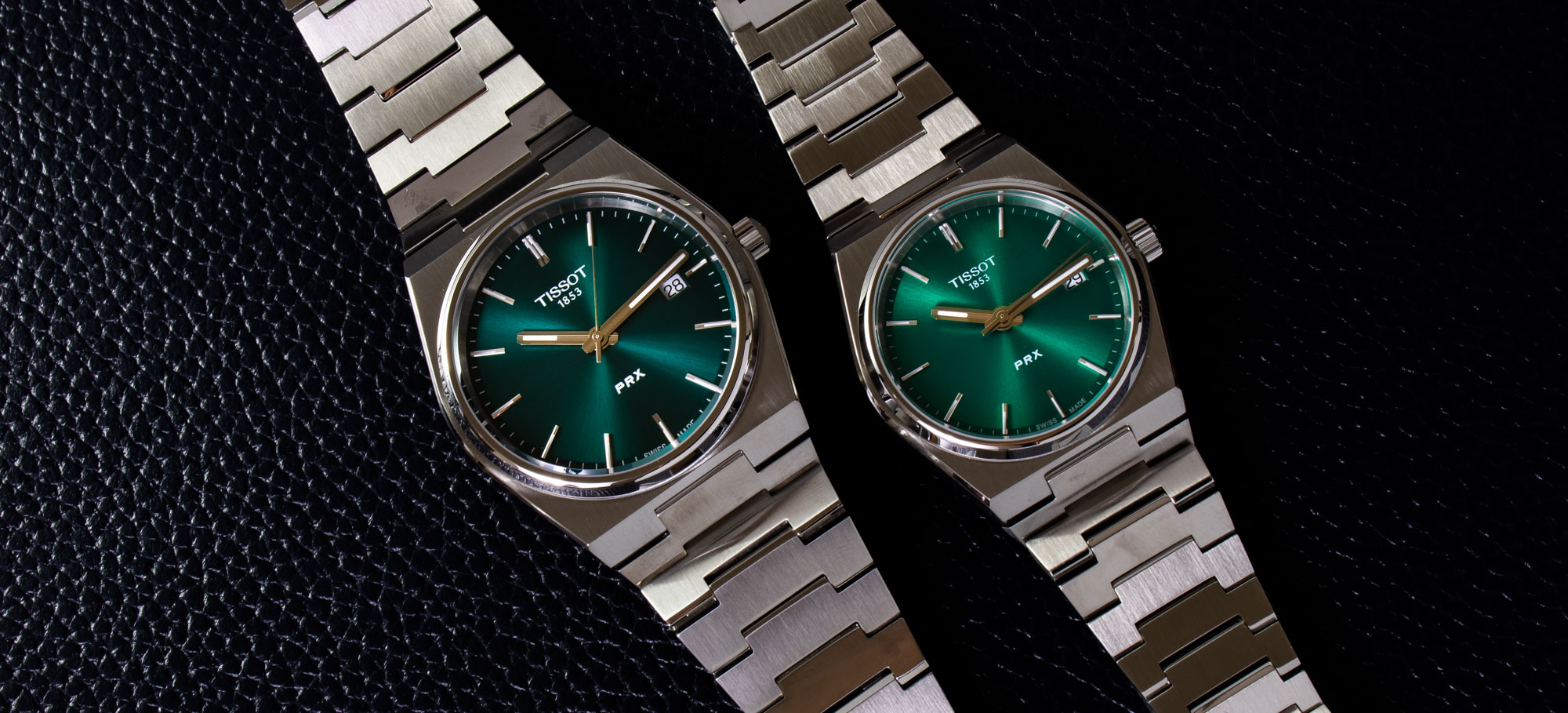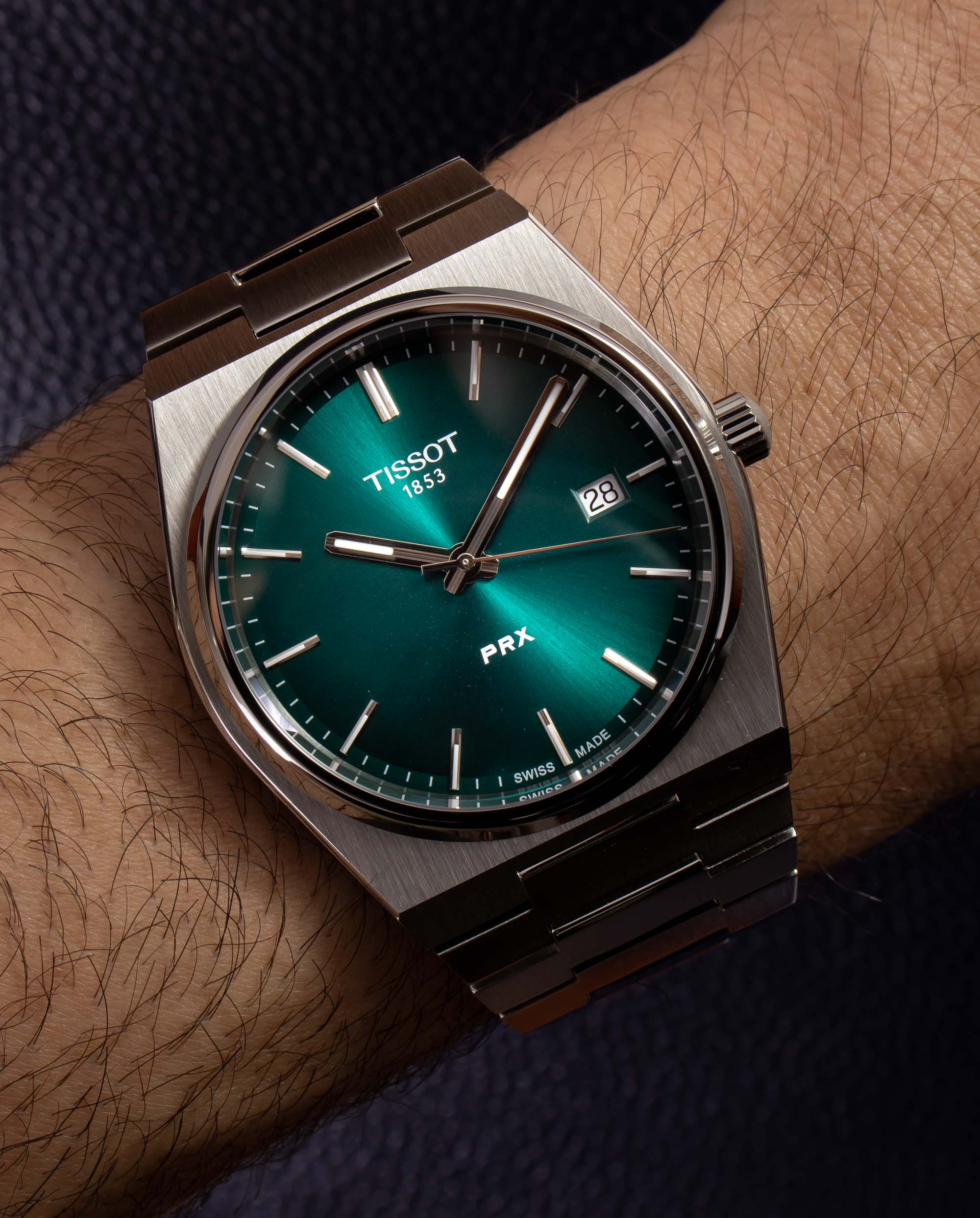
Since its launch in early 2021, the modern PRX series has been a massive success for Tissot, and the model has expanded into an entire lineup of watches spanning different colors, sizes, and even movements. Given that the original model debuted with a quartz caliber, there were many collectors who were excited to see automatic versions join the lineup in both three-hand and chronograph configurations. However, one of the more important (albeit less exciting) additions to the Tissot PRX collection has been the smaller 35mm models that make this fan-favorite integrated bracelet design available to a significantly larger range of potential buyers.
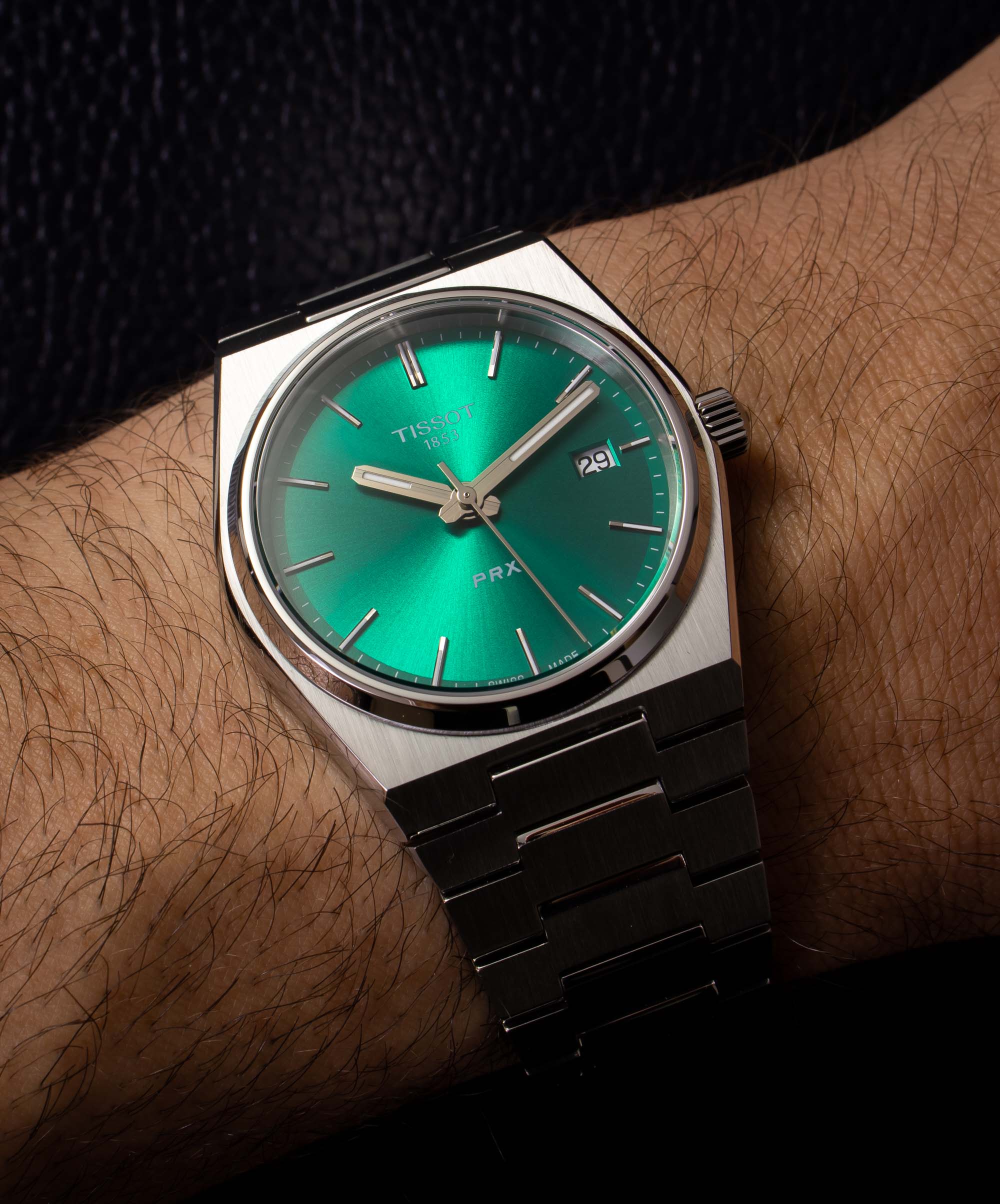
Part of why a smaller-sized version of the Tissot PRX is important is because the watch has an integrated bracelet. It’s common knowledge among collectors how much of an impact a strap change can have on the overall wearability of a watch, and sometimes the right strap will allow you to wear a watch that would otherwise be too large, too small, or otherwise too oddly proportioned for your wrist. However, when watches have integrated bracelets, strap options are significantly more limited, and in most cases, an integrated bracelet watch is simply meant to be worn on its factory-supplied option. For the Tissot PRX, this is a good thing. The integrated bracelet is incredibly well-done for its budget-friendly price point and if you are buying a PRX, chances are that the bracelet is a major part of the reason why you want one (although it still features quick-release connections should you wish to remove it).
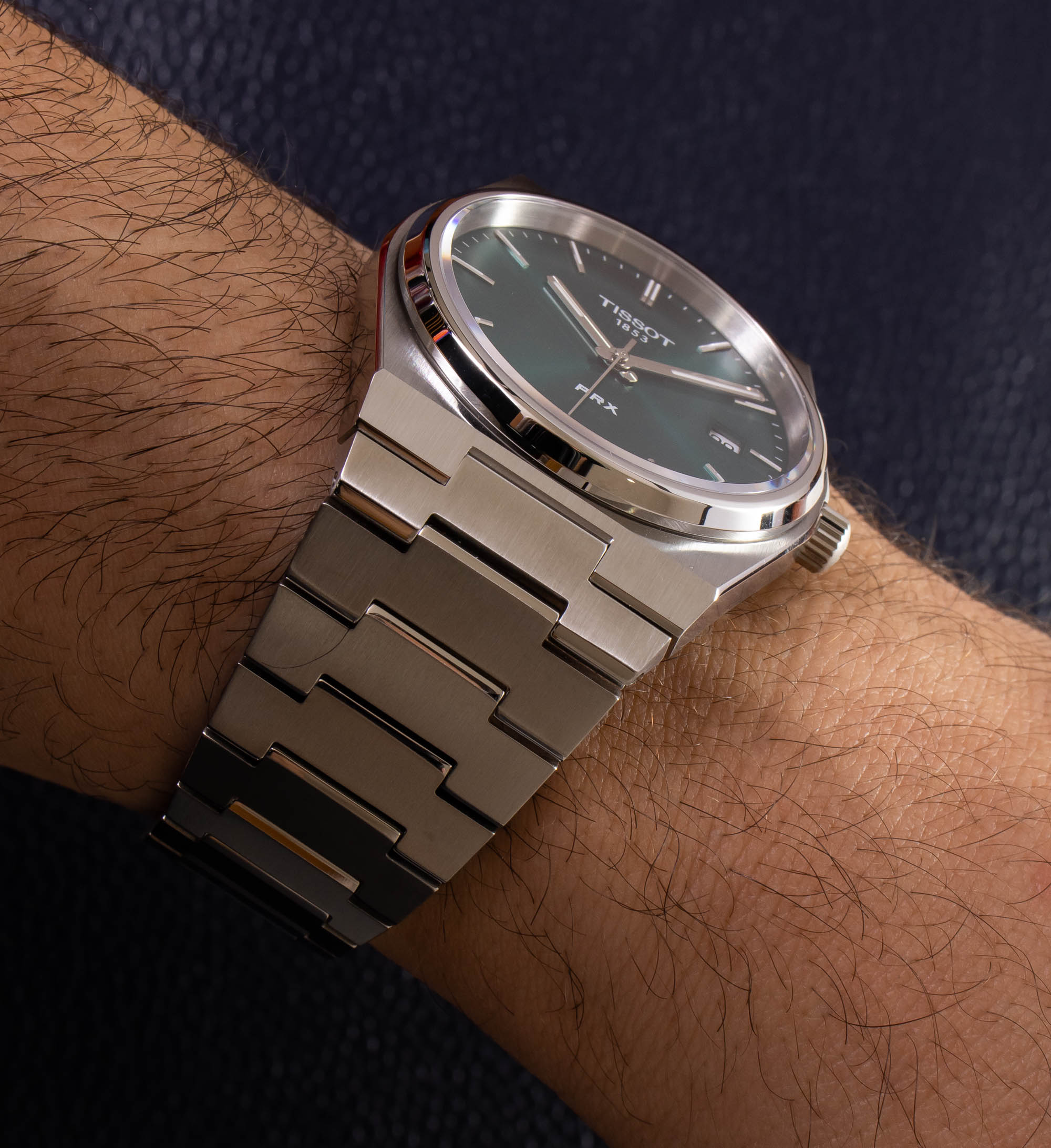
With that in mind, the Tissot bracelet is somewhat like the ones found on other integrated bracelet sports watches with similar overall styles, such as the Audemars Piguet Royal Oak and the Patek Philippe Nautilus in that its structure is not entirely flexible, and there is a maximum amount of curvature that is permitted by the design of both the end-links and the actual bracelet links themselves. With this style of integrated bracelet, having a proper fit is imperative for comfort, but if the lug-to-lug measurement of the watch case itself is too large, no amount of bracelet sizing will ultimately let you increase the curvature at the place where the bracelet meets the lugs. Those with smaller wrists who have ever tried on a big G-Shock will instantly understand what I’m talking about here.
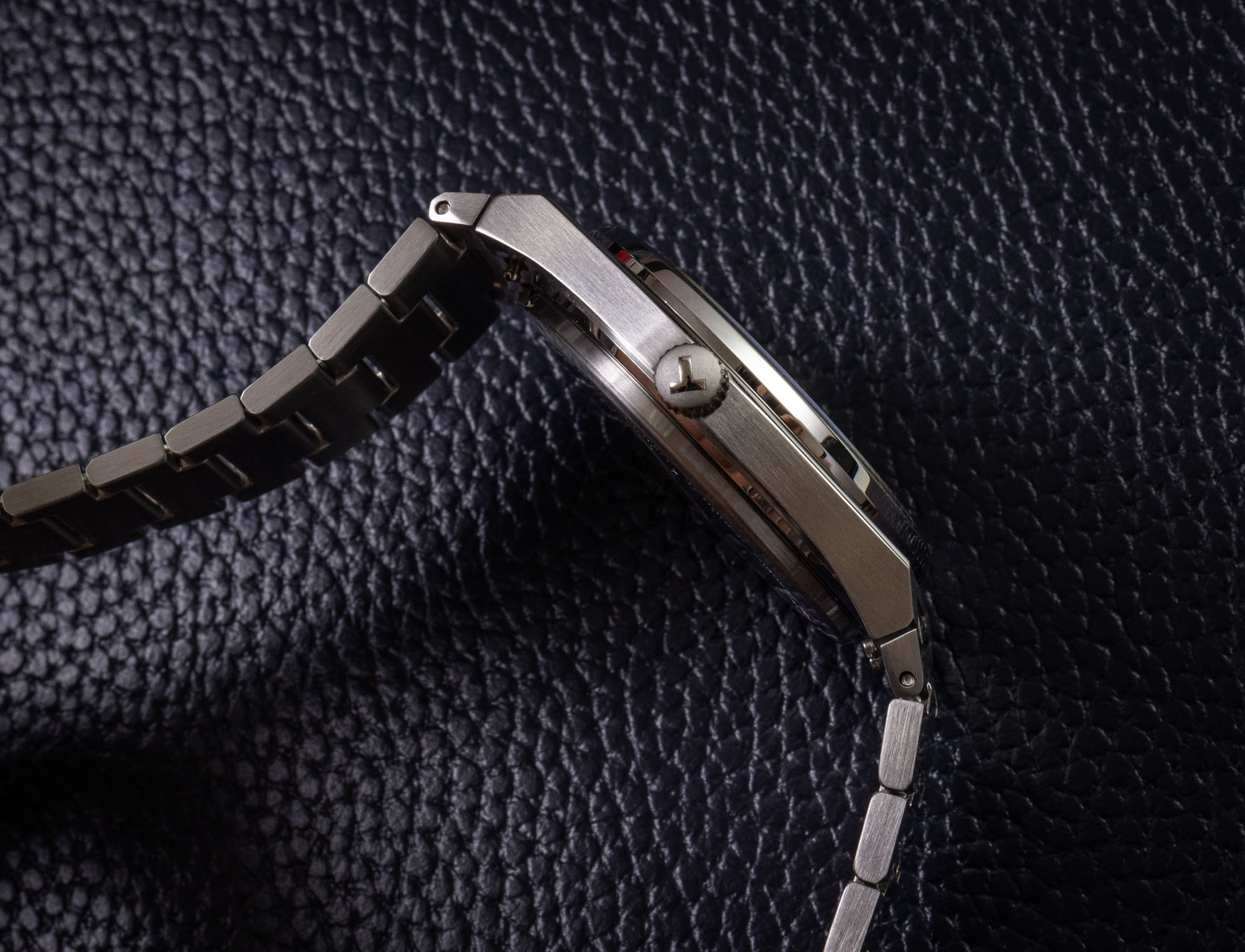
Furthermore, the dial-to-case ratio of the Tissot PRX is surprisingly large, despite its initial appearance. The angular design of its middle case doesn’t make this detail immediately obvious, but when you actually look at the dial in relation to the total lug-to-lug profile of the watch, it occupies a significant amount of the same overall distance. We all know how the dial-to-case ratio of a watch can have an enormous impact on how large it actually wears when on the wrist, and when that ratio is large, watches typically wear quite a bit bigger than their on-paper measurements would suggest — especially when the dial is a bright and punchy color, such as the metallic shades of green featured on the Tissot PRX series.
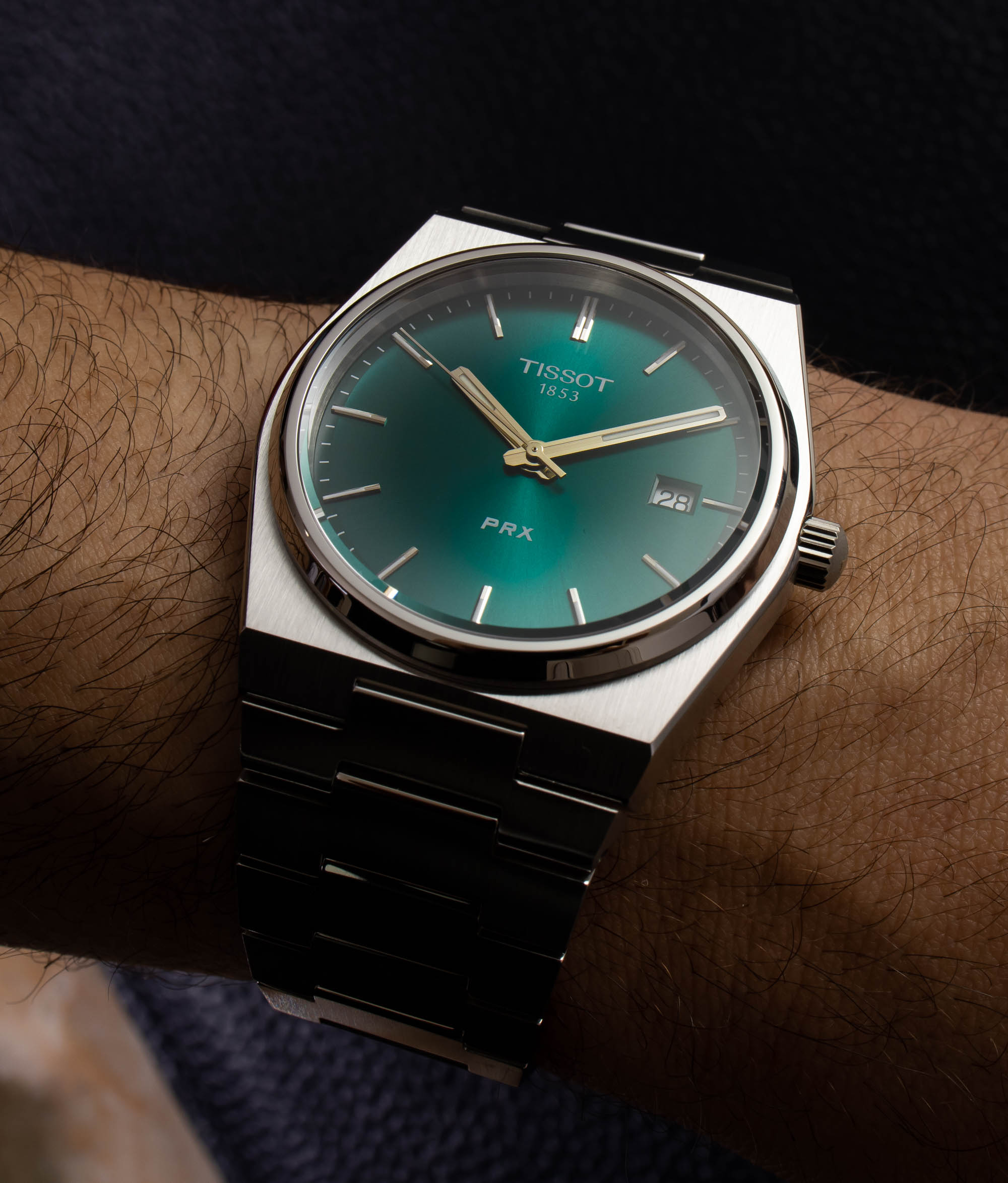
The green sunburst dials fitted to the quartz PRX watches differ significantly from the green grid-like textured dial featured on the automatic version of the series. Naturally, the different surface finishing techniques will guarantee a different overall aesthetic to some degree or another, but the difference between the two styles of PRX dials is far more noticeable on the green versions compared to any of the other colors that are available within the series. While the green dial found on the automatic version is very much a traditional green color, the sunburst texture on the quartz-powered model creates a noticeably brighter and more metallic appearance, which results in more vibrant tones that almost have a very slight aqua color.
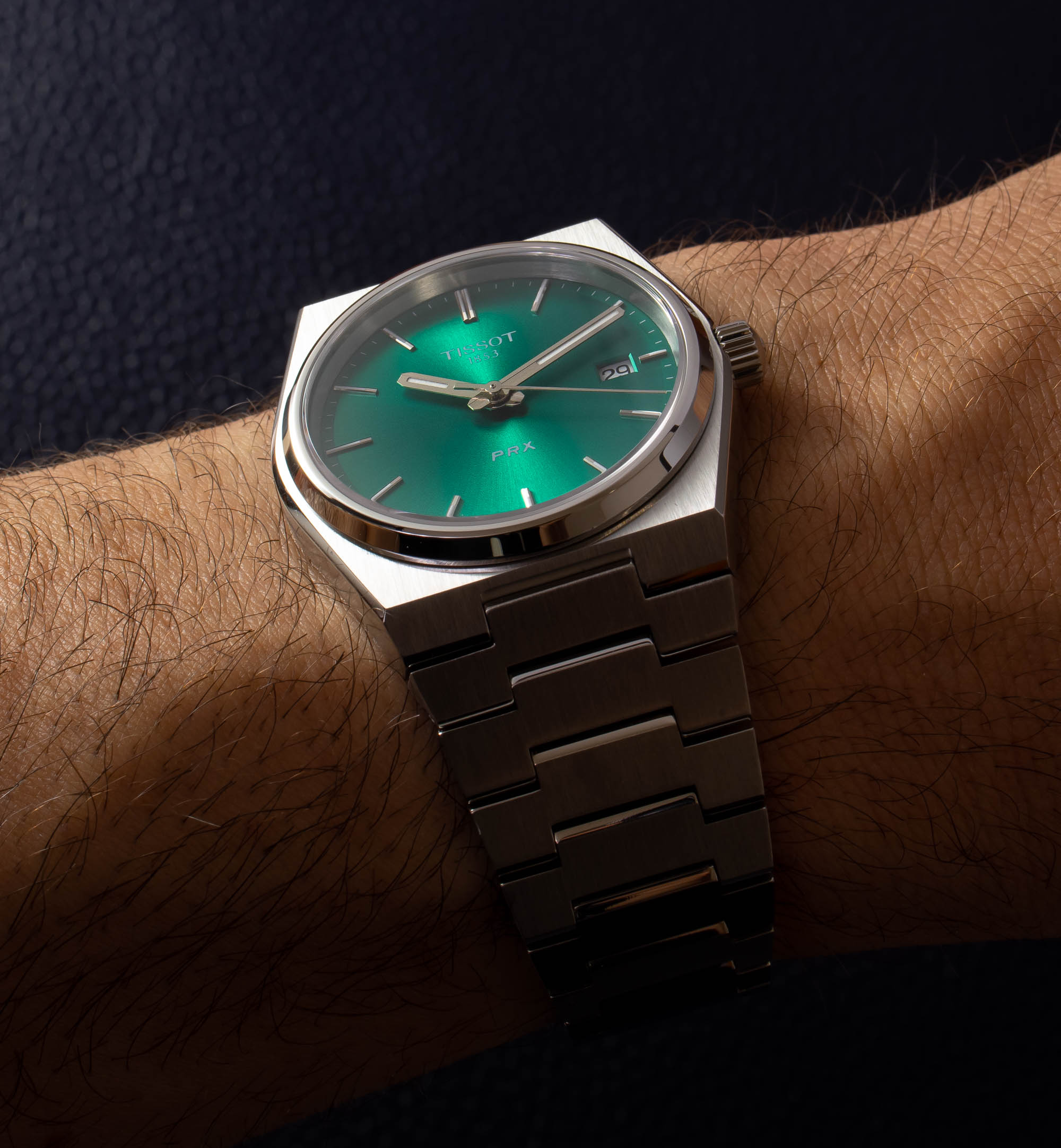
When it comes to the two green dials fitted to the different sized versions of the quartz Tissot PRX models, the dial fitted to the 35mm watch is essentially just a smaller and slightly lighter version of the dial found inside the 40mm model. The overall layout is identical to the other dial colors from the series, with applied markers, a trio of centrally mounted hands, and a date window and 3 o’clock. Additionally, while the dials fitted to the other quartz models also receive a radial sunburst finish, the particular shade of green that Tissot selected for the PRX series provides it with a significantly more retro overall appearance compared to its siblings. On the 40mm version, this can be quite a lot of a very punchy shade of green, and for those with smaller wrists, this particular hue combined with the metallic sunburst finish and angular case design has the potential to make it more than the “pop of color” that you wanted, and something more in the “statement piece” category.
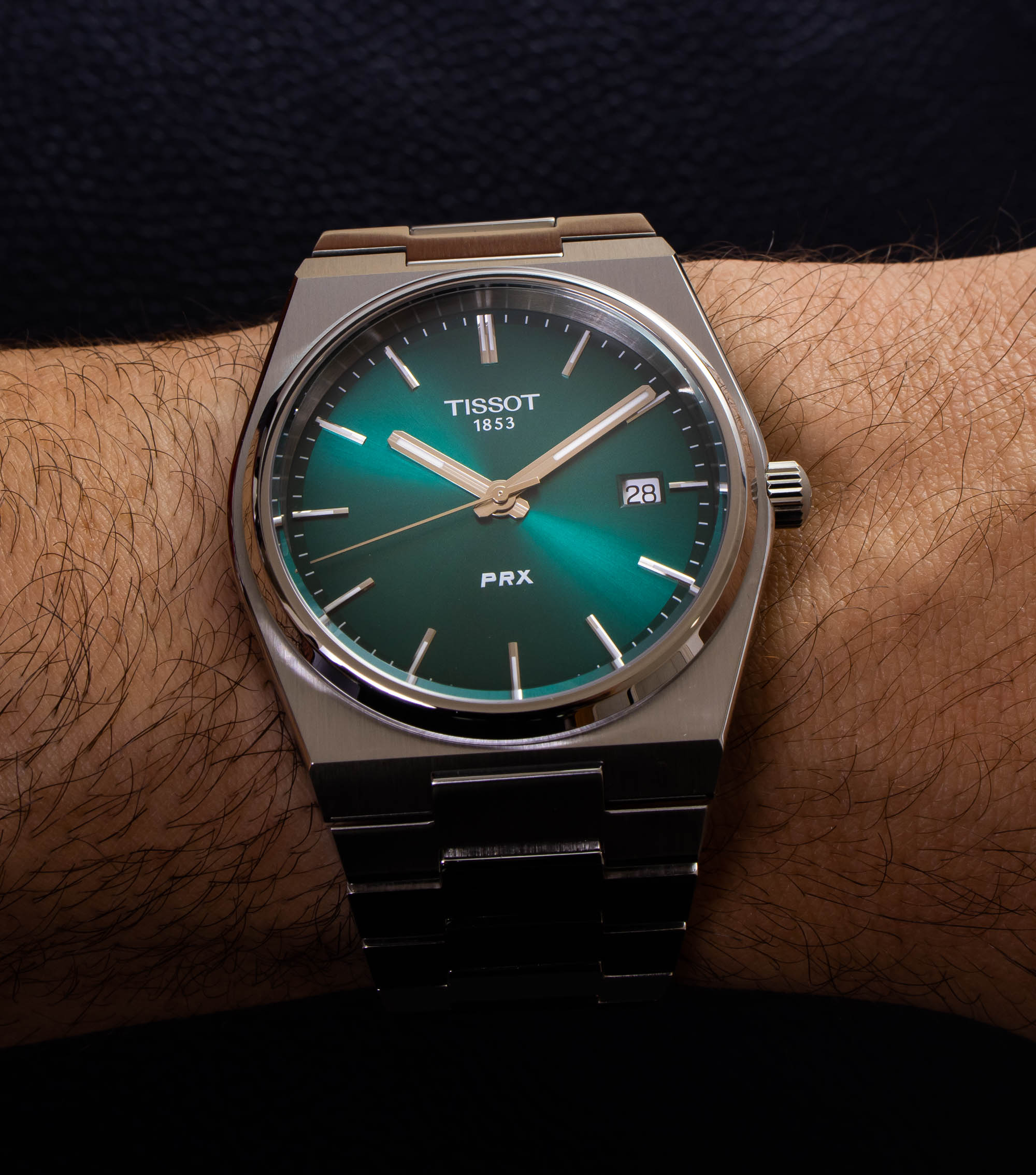
Given that the Tissot PRX is an integrated bracelet watch, where the design of its bracelet is an inherent part of its overall aesthetic, another point to consider is the dial-to-bracelet ratio that you want on your wrist. If the case of the watch occupies the entire top surface of your arm, the bracelet will be relegated to the sides and bottom, meaning that it will very much be playing a supporting role to the case itself. Alternatively, a smaller case size will mean that more of the bracelet will be visible when you look down at your watch, and some designs simply look better when there is a bit more of the bracelet framing the case. The design of the Tissot PRX makes it wear larger than its on-paper case measurements might suggest, and the 35mm case option makes a fantastic alternative for those who felt that the original 40mm version was just a bit too big for their wrist.
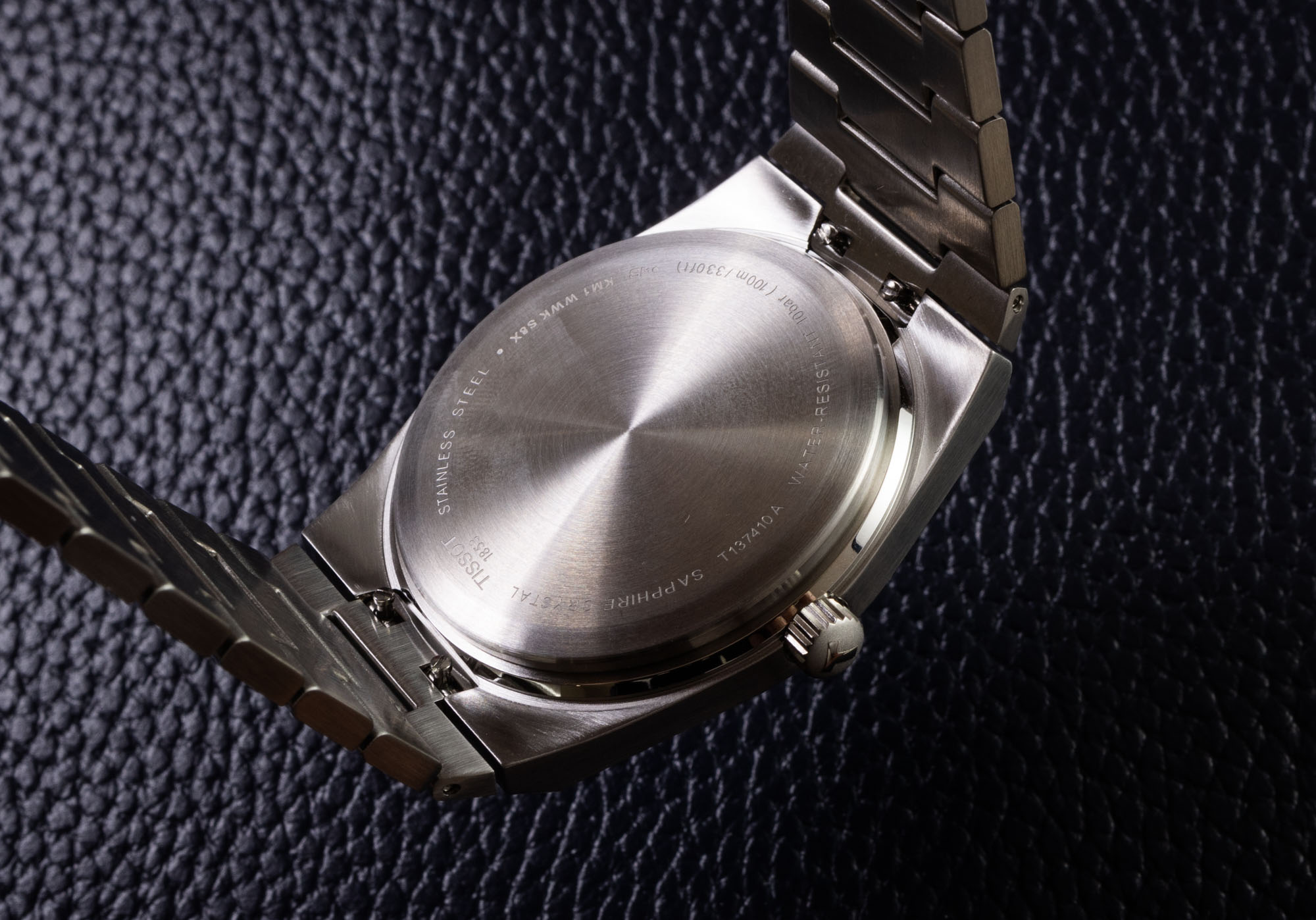
When it comes to the movements powering these two watches with green dials, both are powered by ETA quartz calibers (ETA F06.115 for the 40mm version and ETA F05.115 for the 35mm model). Other than the difference in size, the two battery-powered movements are more-or-less identical and should therefore offer the same overall performance. While the 40mm case size is available with either quartz or automatic movements, the 35mm range is still only quartz powered, meaning that those with their hearts set on a smaller automatic PRX are still going to need to hold out hope a while longer. With that in mind, given the incredible manufacturing capabilities of the Swatch Group, a 35mm Tissot PRX with an automatic movement certainly wouldn’t be out of the question, and that would be the particular version that I might be most tempted to add to my own personal collection.
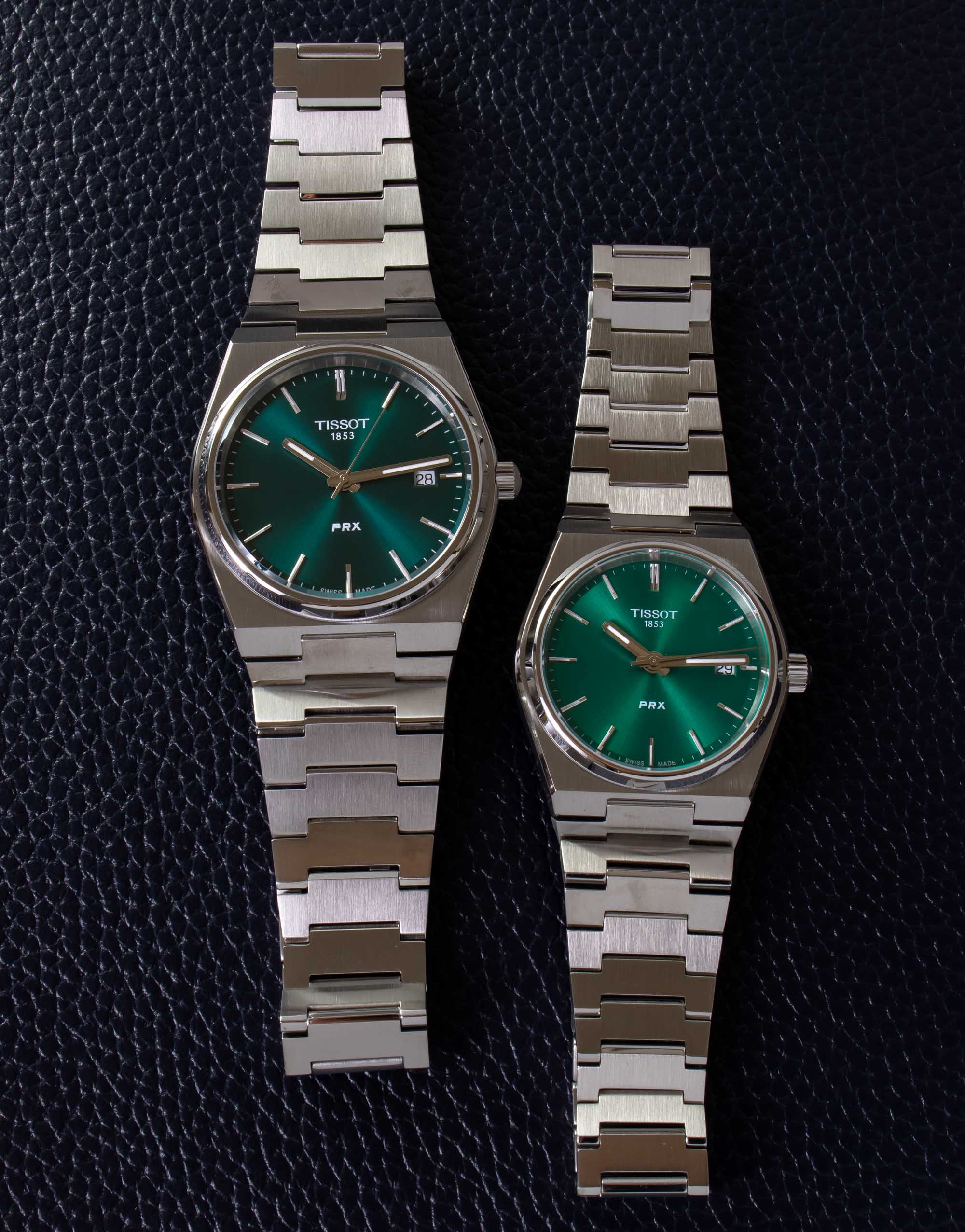
It is quite common for brands to price larger watches slightly higher than their otherwise identical smaller siblings, even if it is just by some nominal amount to reflect the additional materials involved in its construction. However, the official retail price of both the 35mm and 40mm versions of the quartz Tissot PRX with green dials is $375 USD, meaning that you are simply free to choose the version that best suits your wrist. Additionally, given the fun and vibrant tones offered by the green sunburst dials fitted to the quartz-powered models, these watches are likely destined to be someone’s weekend piece or vacation watch, rather than something that is worn on an everyday basis, and their affordable price point perfectly suits this potential role within a person’s collection. For more information, please visit the brand’s website.

